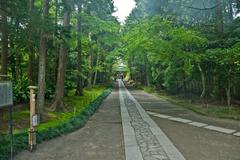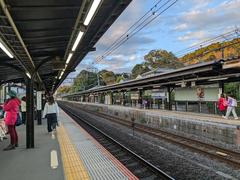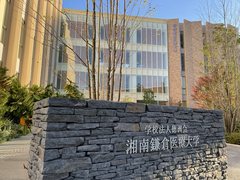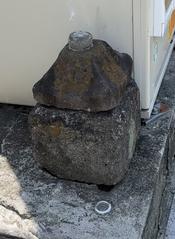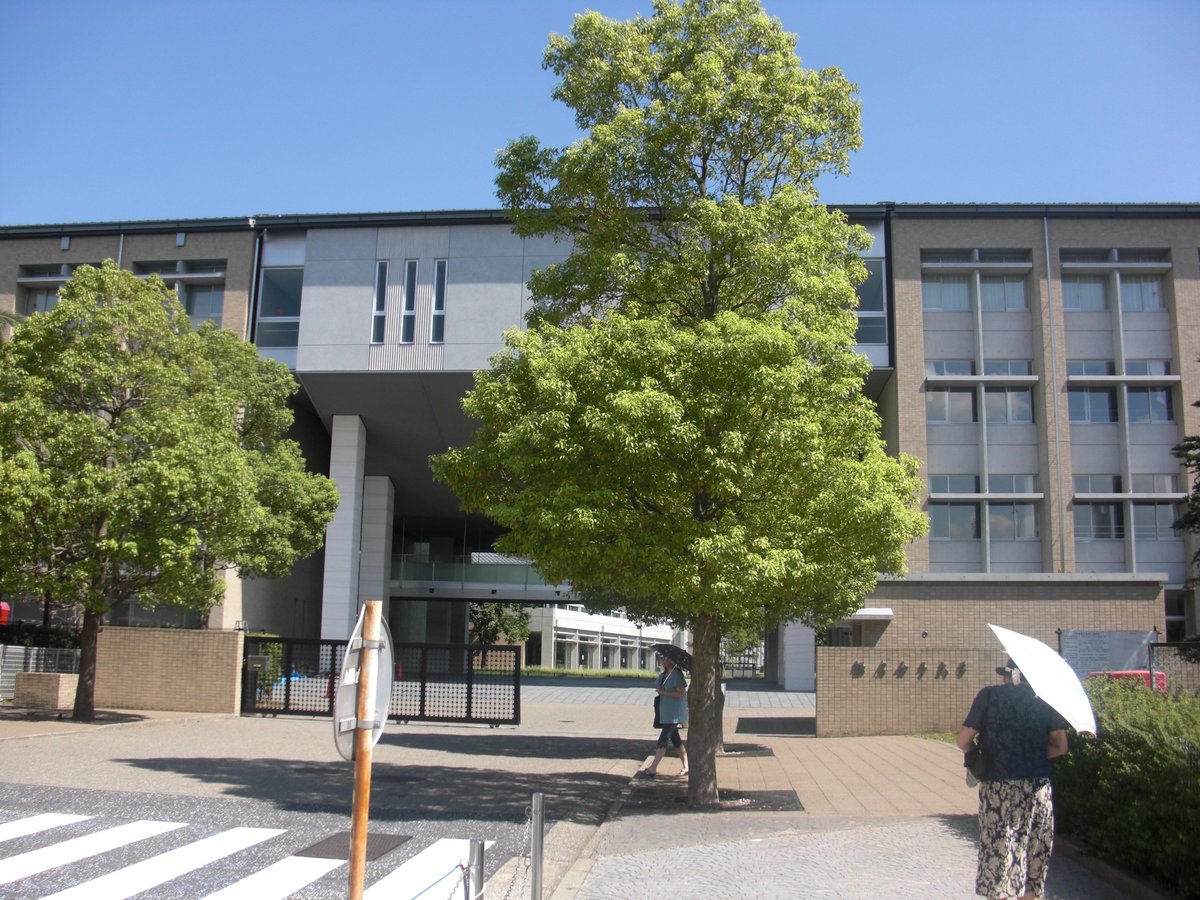
Kamakura Women’s University Visiting Guide: Hours, Tickets, and Nearby Historical Sites
Date: 03/07/2025
Introduction
Nestled in the heart of Kamakura, Kanagawa Prefecture, Kamakura Women’s University is a symbol of progressive women’s education in Japan. Established in 1943, the university represents a significant chapter in Japan’s educational and cultural evolution, particularly regarding opportunities for women. Set amid the greenery and centuries-old temples of Kamakura—a city often called the “Kyoto of Eastern Japan”—the university provides a tranquil, academically rich environment for students and visitors alike. This comprehensive guide details everything you need to know about visiting Kamakura Women’s University and the surrounding historical sites, including the iconic Great Buddha (Kamakura Daibutsu), offering practical advice, historical context, and cultural insights (Kamakura Women’s University official site, ExploreCity.life).
Table of Contents
- Introduction
- Historical Context and Significance
- Visiting Kamakura Women’s University
- Great Buddha of Kamakura
- Practical Travel Tips
- Frequently Asked Questions (FAQs)
- Summary and Final Tips
- References and Further Reading
Historical Context and Significance
Kamakura Women’s University: History and Mission
Founded during a time when women’s access to higher education was limited, Kamakura Women’s University embodies the ideals of empowerment and societal contribution. Its motto, “Gratia et Ministerium” (Gratitude and Ministration), continues to inspire its mission to foster self-reliant women committed to serving their communities. Over the decades, the university has evolved from a specialized training school to a comprehensive institution, reflecting the changing landscape of gender and education in Japan (Kamakura Women’s University official site).
Kamakura City: A Cultural and Spiritual Hub
Kamakura, with its historic temples, shrines, and traditional arts, is a destination steeped in over 800 years of history. The city is known for its scenic beauty and cultural richness, making it a perfect setting for a university dedicated to both tradition and innovation (explorecity.life). The university’s curriculum and activities are closely linked to the city’s heritage, creating a unique academic and cultural environment.
Visiting Kamakura Women’s University
Hours and Admission
Kamakura Women’s University is primarily an academic institution, and general tourist access is limited. The campus is open to the public during special events such as open campus days and the annual school festival, typically held from 9:00 AM to 5:00 PM on weekdays (Kamakura Women’s University official site). Admission is free during these events, but it is recommended to check the university’s official website or social media for the latest schedules and visitor guidelines.
If you wish to visit outside these public events, prior arrangement with the university is required.
Accessibility and Facilities
The campus is situated in a hilly, green area of northern Kamakura. While modern buildings are generally accessible, visitors with mobility concerns should inquire ahead to ensure accommodations are available. Public buses and school buses connect the campus to Kita-Kamakura Station, which is about a 29-minute walk away (Trek Zone). On campus, amenities include a large library, computer rooms, study spaces, vending machines, and rest areas. There are no cafés or shops on campus, but nearby districts offer dining options (JapanRAR).
Campus Life and Visitor Experience
With approximately 4,000 students and 400 staff, Kamakura Women’s University maintains a close-knit, collaborative atmosphere. The annual school festival is a highlight, featuring student performances, food stalls, and sometimes celebrity guests, providing an authentic window into Japanese university culture. The campus is also renowned for its gardens and tranquil spaces, ideal for photography and quiet reflection. Visitors are expected to dress modestly and behave respectfully as the campus is primarily a place of study. Photography is permitted in outdoor areas but may be restricted indoors.
For those unable to visit in person, the university’s YouTube channel offers virtual tours and event highlights.
Great Buddha of Kamakura (Kamakura Daibutsu)
Hours, Tickets, and Accessibility
The Great Buddha, located at Kotoku-in Temple, is one of Japan’s most iconic monuments. The bronze statue of Amida Buddha, dating back to 1252, stands 13.35 meters tall and is a designated National Treasure (Kotoku-in Official Site, Japan Guide).
- Hours: Daily 8:00 AM – 5:30 PM (last admission 5:00 PM; hours may vary seasonally)
- Tickets: 300 yen for adults, 150 yen for high school and junior high school students, free for children under 12 (Kotoku-in Official Site)
- Access: 15-minute walk from Kamakura Station (JR Yokosuka Line) or 5-minute walk from Hase Station (Enoden Line)
- Accessibility: Paved paths provide wheelchair access to the statue, though some temple grounds may have steps; assistance is available on request.
Tickets are sold at the entrance, and advance booking is not required. Early arrival is recommended on weekends and holidays to avoid crowds.
What to Expect
Visitors can view the Great Buddha from outside and even enter the statue’s hollow interior for a unique perspective on its construction. The surrounding gardens and small museum offer insights into the statue’s history and restoration. Photography is permitted throughout most of the site, except inside the statue itself.
Nearby Attractions
Kamakura is home to a wealth of historic sites within easy reach of the university and the Great Buddha:
- Hase-dera Temple: Known for its gardens and ocean views, a 5-minute walk from the Great Buddha.
- Tsurugaoka Hachimangu Shrine: Kamakura’s most significant Shinto shrine.
- Engaku-ji and Meigetsu-in Temples: Renowned for tranquil gardens and seasonal beauty.
- Ōfuna Kannon: A striking statue of the Buddhist goddess Kannon, accessible by bus or train.
These sites, along with Kamakura’s traditional shops and hiking trails, create a comprehensive cultural experience (Japan Guide, Trek Zone).
Practical Travel Tips
- Advance Arrangements: Contact the university in advance to visit outside open campus days.
- Event Timing: Plan your visit to coincide with the school festival or other public events for the best experience.
- Dress Code & Etiquette: Modest attire and respectful behavior are expected on campus and at religious sites.
- Transportation: Kamakura is about an hour from Tokyo by train; local buses and walking paths connect the university and temples.
- Accessibility: Wear comfortable shoes and be prepared for hilly terrain; inquire ahead for specific accessibility needs.
- Photography: Follow posted rules and seek permission where required.
- Language: English proficiency may be limited; a translation app is helpful.
Frequently Asked Questions (FAQs)
Q: What are the visiting hours for Kamakura Women’s University?
A: The campus is open to the public during open campus days and school festivals, usually 9:00 AM–5:00 PM. Otherwise, visits require prior arrangement (Kamakura Women’s University official site).
Q: Is there an admission fee?
A: No, admission is free during public events. There are no regular ticket requirements for visiting.
Q: How can I reach the university from Tokyo?
A: Take the train to Kamakura Station (about 1 hour), then transfer to Kita-Kamakura Station or use local buses (Trip Kamakura).
Q: Is the campus accessible for visitors with disabilities?
A: Yes, but contact the university in advance to confirm specific accommodations.
Q: Can I take photos on campus?
A: Photography is allowed in outdoor spaces; restrictions may apply indoors.
Q: What nearby historical sites can I visit?
A: The Great Buddha, Hase-dera, Tsurugaoka Hachimangu, Engaku-ji, and Meigetsu-in are all accessible from the campus.
Summary and Final Tips for Visiting Kamakura Women’s University
A visit to Kamakura Women’s University, paired with exploration of Kamakura’s historical sites—including the Great Buddha—offers a unique blend of educational insight and cultural heritage. The university’s commitment to women’s empowerment and community engagement is matched by Kamakura’s rich legacy of temples, shrines, and scenic beauty. For the best experience, plan your visit during public events, respect local customs, and take advantage of the wealth of nearby attractions (Kamakura Women’s University official site, JapanRAR, Kotoku-in Official Site, Japan Guide).
Stay informed by checking official websites and following local tourism channels. For virtual content and updated visitor information, explore the university’s YouTube channel and Kamakura City Tourist Association.
References and Further Reading
- Kamakura Women’s University Official Site
- Kotoku-in Official Site
- Japan Guide
- JapanRAR: Visiting Kamakura Women’s University
- Kamakura City Tourism and Travel Information
- Community Impact of Universities — Times Higher Education
- Trek Zone: Kamakura Women’s University
- Trip Kamakura
- HikersBay: Kamakura Tourist Information
- ExploreCity.life: Kamakura
- YouTube: Kamakura Women’s University
- Adventure Backpack: Kamakura Culture
- Academia.edu: Kamakura Women in Historical Context

